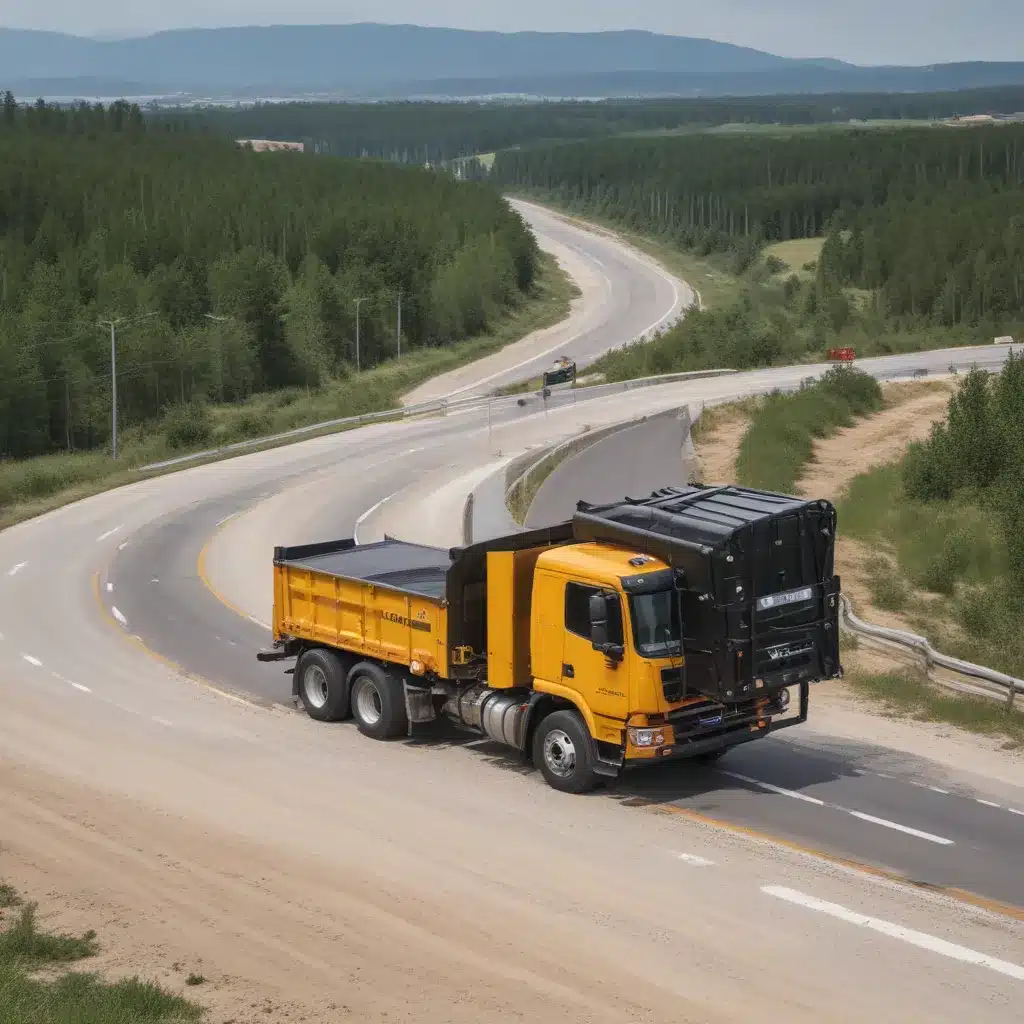As an experienced forestry contractor, I’ve seen firsthand how crucial it is to optimize the navigation and operation of our logging equipment. Nowhere is this more important than with forwarders – the workhorses of the timber industry that transport harvested logs from the stump to the roadside. By leveraging the power of GPS guidance systems, we can unlock significant gains in productivity, fuel efficiency, and environmental sustainability.
Satellite Navigation Systems
At the heart of any GPS-guided forestry operation is the global navigation satellite system (GNSS). This network of orbiting satellites provides real-time positioning data that can be used to track the location of our forwarders with remarkable precision. The most common GNSS is the United States’ Global Positioning System (GPS), but other systems like Europe’s Galileo and Russia’s GLONASS are also widely utilized.
What makes these satellite navigation systems so valuable is their ability to determine a vehicle’s latitude, longitude, and elevation with an accuracy of just a few meters. This level of locational awareness is essential for navigating the often rugged and remote terrain of the forest. By integrating GNSS receivers into our forwarders, we can accurately map out the most efficient travel routes, avoid obstacles, and double-check that our loads are properly distributed.
Forwarder Vehicles
Forwarders are specialized logging machines designed to transport freshly harvested timber from the cutting site to the landing area or roadside. These articulated vehicles feature a load-bearing bed or rack, along with powerful hydraulic cranes for loading and unloading logs. Compared to skidders or cable yarders, forwarders offer several advantages, including:
- Reduced soil disturbance: Forwarders operate on tires rather than tracks, minimizing the impact on sensitive forest floors.
- Improved load optimization: The onboard cranes allow for precise log positioning and weight distribution, increasing payload capacity.
- Greater maneuverability: The articulated design and hydrostatic transmissions give forwarders exceptional agility in tight spaces.
Integrating GPS guidance into these forwarder vehicles can further enhance their efficiency and sustainability. By knowing their precise location and heading, operators can navigate more confidently through the forest, avoiding obstacles and optimizing their routes.
Navigation Systems
At the core of any GPS-guided forestry system is the route planning and navigation software. These applications utilize the GNSS data, along with detailed digital terrain maps and forestry-specific layers, to provide turn-by-turn guidance for our forwarder operators.
Route Planning: The navigation system first analyzes the terrain and identifies the most efficient path from the cutting site to the landing area. This may involve factoring in variables like slope, soil conditions, and the location of existing roads or skid trails. The software can then overlay this optimal route on a digital map, giving the operator clear visual cues to follow.
Obstacle Avoidance: In addition to route planning, GPS-guided navigation systems can also detect potential obstacles in the forwarder’s path, such as large boulders, fallen trees, or soft ground. The system can then provide early warnings to the operator, allowing them to adjust their course or implement mitigation strategies.
Sensor Integration: To further bolster the navigation capabilities, many GPS-guided systems integrate data from other onboard sensors. This can include:
- LiDAR: Light detection and ranging (LiDAR) sensors can create highly detailed 3D maps of the surrounding terrain, enhancing obstacle detection and avoidance.
- Cameras: Onboard cameras, combined with computer vision algorithms, can identify specific features like logging roads, landing areas, and individual trees.
- Inertial Measurement Units (IMUs): These sensors track the forwarder’s orientation, speed, and acceleration, complementing the GNSS data for more accurate positioning.
By fusing all of these data sources, the navigation system can provide the forwarder operator with a comprehensive, real-time understanding of their environment and the optimal path forward.
Efficiency Improvements
The integration of GPS guidance into forwarder operations can deliver substantial gains in productivity, fuel efficiency, and environmental sustainability. Let’s explore some of the key benefits:
Fuel Consumption: By navigating the most direct routes and avoiding unnecessary detours or reversals, GPS-guided forwarders can significantly reduce their fuel consumption. Studies have shown fuel savings of up to 35% compared to traditional, non-guided operations.
Productivity Gains: With the ability to plan and execute routes more efficiently, GPS-guided forwarders can complete their transport cycles faster. This, in turn, allows for more loads to be moved per day, boosting overall productivity. Some operations have reported up to 20% increases in logs delivered per shift.
Environmental Impact: The reduced fuel usage and more efficient movement through the forest translate directly to lower greenhouse gas emissions and a smaller carbon footprint. Additionally, the enhanced obstacle avoidance capabilities of GPS-guided systems help minimize soil compaction and damage to sensitive ecosystems.
Timber Quality: By navigating more carefully and avoiding unnecessary stress on the harvested logs, GPS-guided forwarders can help preserve the quality and value of the timber. This is especially important for specialty products like veneer logs or high-grade sawlogs.
Operator Assistance: GPS-guided navigation systems don’t just benefit the overall operation – they also provide invaluable support to the forwarder operators themselves. With clear route guidance and obstacle warnings, the operators can focus more on the delicate task of loading and transporting the logs, improving safety and reducing fatigue.
Conclusion
As forestry contractors, we have a responsibility to maximize the efficiency and sustainability of our operations. By integrating GPS guidance systems into our forwarder fleet, we can unlock significant gains in productivity, fuel savings, and environmental stewardship. From optimized route planning to advanced obstacle avoidance, these cutting-edge technologies offer a clear path forward for the timber industry.
If you’re interested in exploring the possibilities of GPS-guided forwarder navigation, I encourage you to visit our website at ForestryContracting.co.uk to learn more about our services and solutions. Together, we can push the boundaries of what’s possible in sustainable forestry.
Tip: Assess soil compaction before harvesting operations


